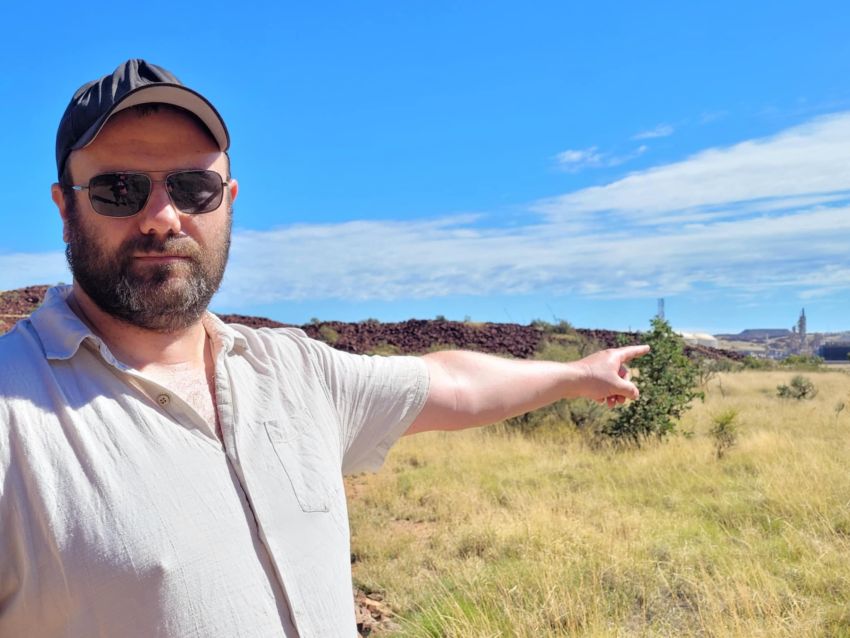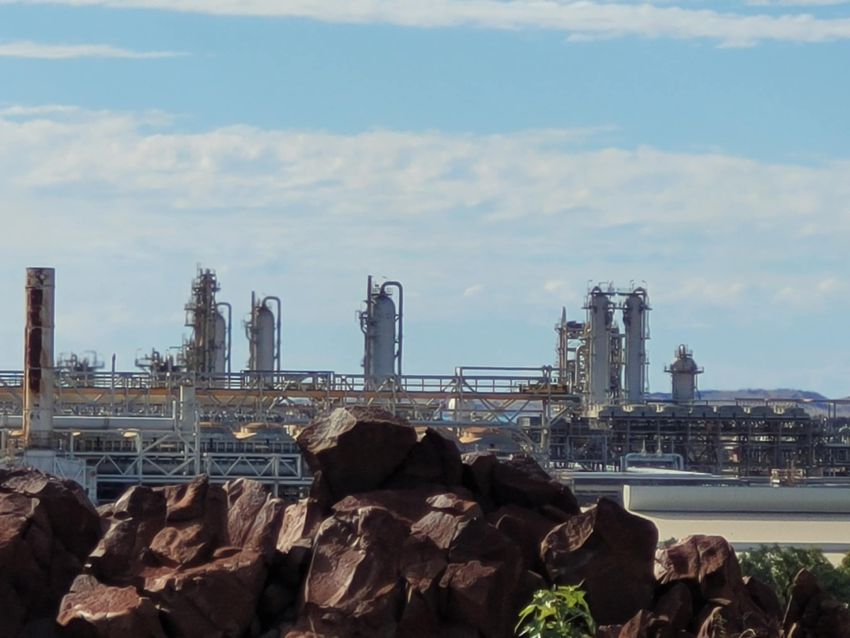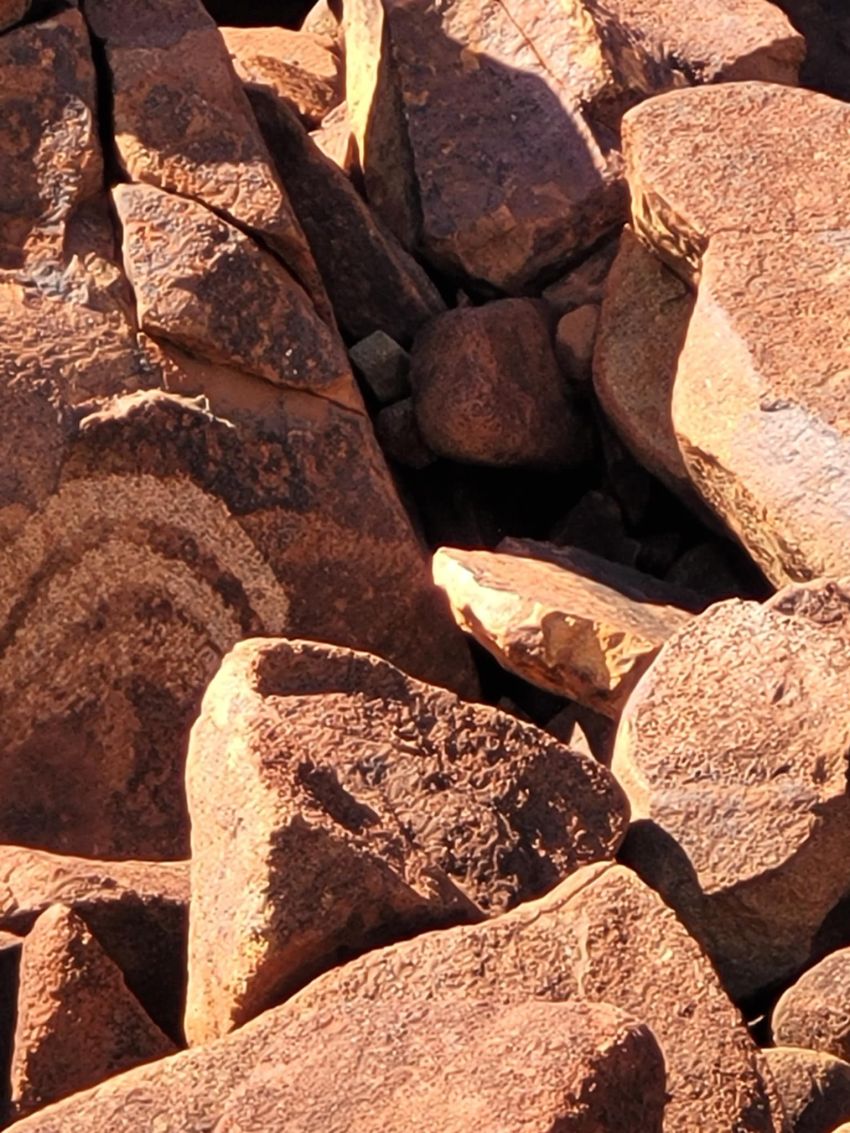
The towns of Karratha and Dampier, which fringe the coast of the Pilbara in Western Australia’s north west, were set up in the 1960s to service massive iron ore mines that powered the economic growth of that period.
The construction of Dampier, between 1966–68, levelled million-year-old rocks that contain ancient engravings — petroglyphs — expressing First Nations spiritual beliefs and that were carved about 50,000 years ago.
First Nations people were not consulted about the township’s construction; they were not considered citizens.
Today, Woodside Energy’s industrial footprint and acidic fumes loom large over the Murujuga (Burrup) Peninsula.
But when the federal environment minister Murray Watt gave his provisional green light to Woodside’s North West Shelf gas expansion plan on May 28, there was a muted response from the Karratha community.
Health worker Chris Jenkins, who has lived in Karratha for two and a half years, told Green Left that Woodside and Rio Tinto have spent up big on convincing locals that they cannot do without it.
“Karratha was always a white settlement. It began as a mining camp and developed into a township where most people are employed by mining corporations, or work in related areas.
“Woodside and Rio Tinto sponsor everything, including frontline health services, and community groups receive grants from them. Given the lack of direct government investment, it helps the companies acquire a social licence and ingrains the view that without these corporations’ ‘philanthropy’, the Pilbara wouldn’t have much for people to enjoy.”
This company loyalty is further entrenched by the fact that many mine workers, local or fly-in-fly-out, have their housing, holidays, bills and other services paid for.
Life is more complicated and unjust for First Nations communities, Jenkins said. Many live in public housing, but cannot get air conditioning unless their trust organisation, or corporation, pays for it.
Trust organisations or corporations were set up in Karratha on a language, traditional lands or seas custodianship basis, to negotiate for royalties with mining communities. Jenkins said all are heavily courted by the mining giants.
There are at least six such organisations in Karratha and Murujuga and more than 14 throughout the Pilbara. This is why politicians and mining companies can claim they have First Nations’ agreement for mining leases, even though not all First Nations groups, or families, agree.
Those living in poverty, who receive modest sums from mining corporations, may be reluctant to voice opposition to mining companies if it threatens their income and security.
Without air conditioning, for example, homes are unliveable in a climate in which for months temperatures can hover around 40°C and, in recent years, some summer days have reached 48°C and 50°C+.
Jenkins said that summers are coming earlier and cyclones are worsening, due to climate change.
“This is the lunacy of the Woodside deal. It’s going to contribute some 4 billion tonnes of greenhouse gas emissions over the life of the extension.
“The Pilbara has a very fragile environment and we’re already seeing a serious depletion of above-ground water. The broader climate impacts are global, with much of the carbon from gas exports not even being counted in Australia’s tally.”
Mardathoonera woman Raelene Cooper, a Traditional Custodian and former chair of the area’s Indigenous representative body, the Murujuga Aboriginal Corporation, is outspoken about stopping the Woodside extension.
She is currently seeking a Federal Court injunction to compel Watts to decide on a cultural heritage assessment of Murujuga, which has been with the government for three years, before making a final decision on Woodside’s extension.
Murujuga is believed to have more than 1 million petroglyph images. It is sacred to the Ngurra-ra Ngarli people, the five Traditional Custodian groups in the region, connecting them to their culture, lore and spiritual beliefs.
The petroglyphs have been etched into the iron oxide surfaces of the distinctive igneous rock mounds, estimated to be 2.7 billion years old. Each engraving reveals an image on the paler clay surfaces.
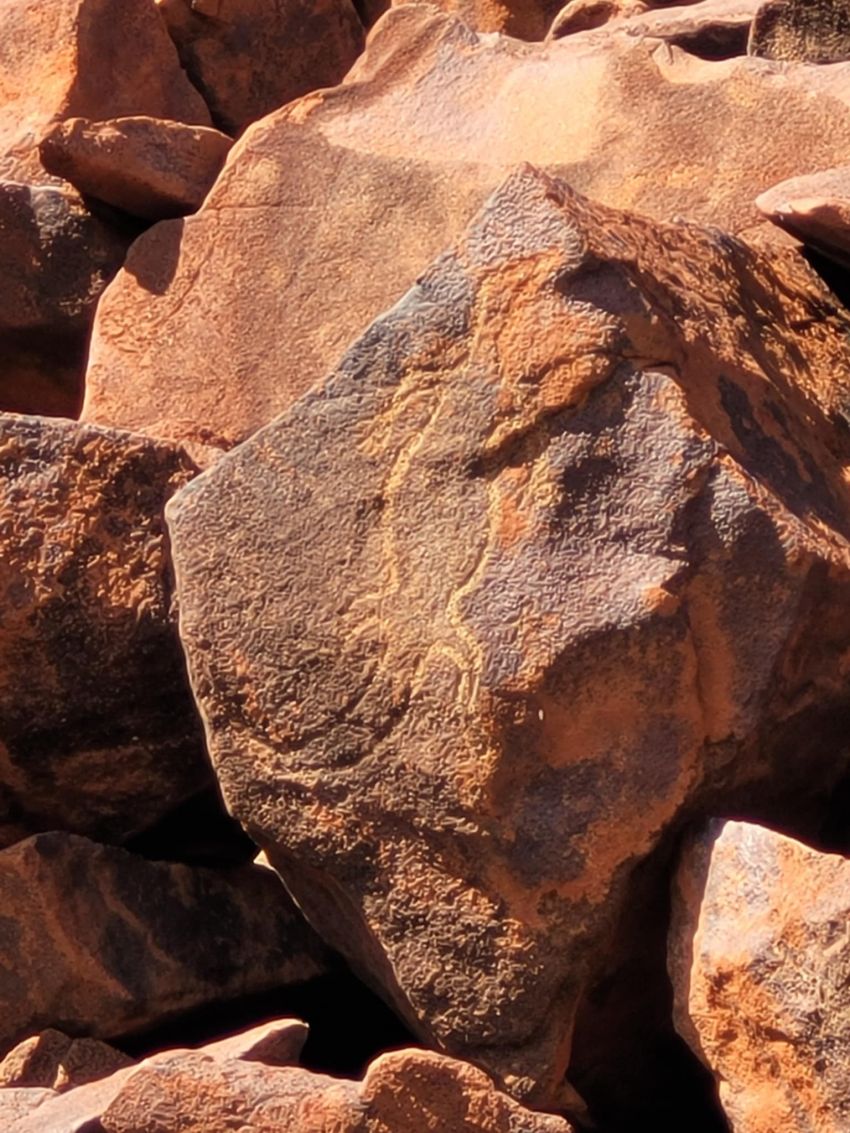
“It is incredible that, at Murujuga and across the Pilbara, there are so many precious artefacts that are part of an unbroken cultural connection that spans back tens of thousands of years,” Jenkins said.
“There are animals depicted that have been extinct in this region for at least 10,000 years.
“Humanity should be in awe of this human story that goes so much further back than what most non-Aboriginal people can even fathom. Now, it’s at risk of disappearing just so Woodside’s shareholders can reap a profit.”
The original iron ore mining magnates, such as Lang Hancock, were not concerned with the spiritual or cultural interests of Traditional Custodians. Archaeologist Robert G Bednarik has estimated by that between 1963 and 2006 alone, 24.4% of the petroglyphs were destroyed.
Jenkins said if Woodside gets its way, the destruction will continue.
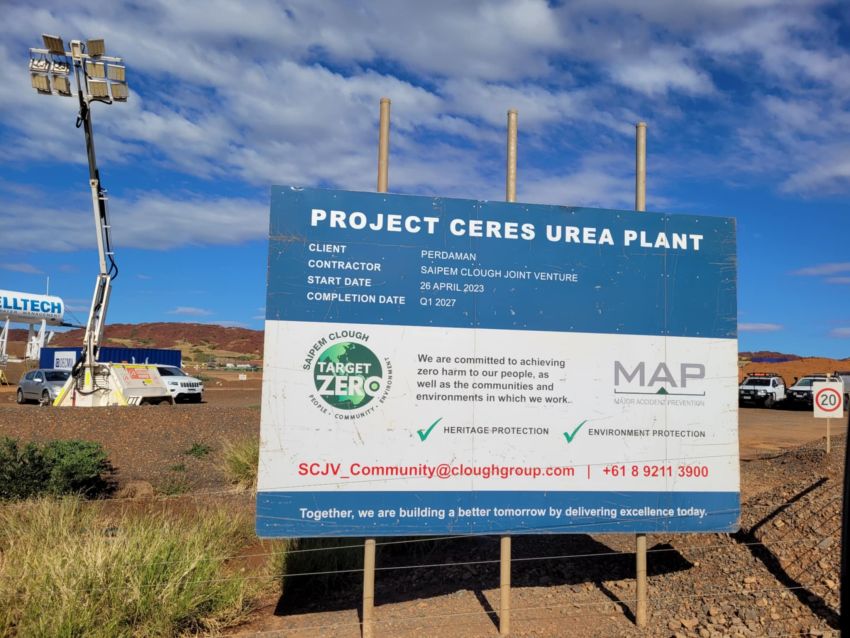
The construction of the Project Ceres urea plant, which abuts the Nganjarli Trail at the beginning of Murujuga National Park, is another danger for the survival of the petroglyphs.
The urea plant, slated as the largest in the Australia and one of the largest in the world, was approved by former environment minister Tanya Plibersek, despite Traditional Owners’ objections. It is still under construction, but when finished will produce more than 2 million metric tonnes of urea a year.
Converting gas into ammonia to make fertiliser has an extremely high carbon footprint, and it emits the potent greenhouse gas nitrous oxide.
A tiny Aboriginal site, a concession to Traditional Custodians, has been cordoned off in the middle of the plant, but on the rest of the site the ancient rock piles have been pulverised.
“There is so much double speak,” Jenkins said. “These multi-billion-dollar companies make out that that they care about Indigenous heritage and values. They greenwash everything — like their fleet of electric cars emblazoned with their company logos.
“But they only care about their bottom line. They know the impact of their policies and they simply don’t care. It means they won’t stop by themselves and so the broader community must.”
